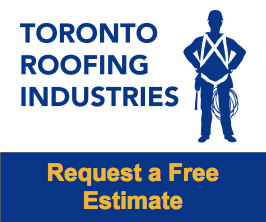(PROACTIVE VS. DEFERRED)
At one time, this writer was in charge of the Roofing Department for one of Toronto’s leading Engineering Firms. I have had the advantage of surveying and managing millions of sq. ft. of roofing. I have prepared numerous reports to Owners and Facility Managers alike to advise and make recommendations on those next practical and sometimes critical steps of roof replacement versus roof maintenance.
Objectively, the goal in mind is to achieve optimum service life of the roof system at the least possible cost to the owners.
Unfortunately, we find the common misconception still out there among many Property Managers is… “if our roofs aren’t leaking then we don’t have to bother with them”. This is a costly mistake that will lead to much greater expense down the road. Weigh in the collateral damage such as… thermal degradation, interior repairs, mold remediation, inventory loss, component loss (computers), electrical system failures or even unfulfilled orders and you quickly see how the costs add up.
There is an old adage in our industry; a roof accounts for only 10% of the construction costs of a new building but could account for 90% of the buildings problems (and costs) down the road.
Managing a building is not unlike managing a business. As a business owner now, I understand all too well that cash flow is a key fundamental concern. Successful business owners ensure that their companies flourish by using strict financial controls. In other words, they work to keep expenses down while maximizing the cash-generating functions.
An often over-looked opportunity to significantly SAVE money and contribute to corporate profits can be easily found within the sphere of Property Management. Something as simple as periodic roof inspections leading to potential (and often simple) maintenance work will not only provide the welcome peace of mind but also (in many cases) extend the effective service life of the roof. Indeed, it can pay huge dividends back to you to properly manage the Facilities Assets and protect the capital investment by being proactive and not deferring before – it is too late.
Here are some helpful tips we look for when evaluating a flat roof’s serviceability; failed caulking, debonded membrane seams, blocked drains, debris on roof, wind scorched areas, loose fasteners, unfilled pitch pockets, over/under torching, inaccurate head laps, gravel embedment, improper detail work, collapsed insulation board and – mechanical equipment.
“Mechanical equipment” on commercial flat roofs may account for the majority of roof leaks! That shouldn’t be surprising when you consider that the roof is often the drop spot for all the construction trades such as mechanical, electrical and plumbing. Most roofers are not trained in these specialty areas. While the cause of some active leaks may be unknown, inferences are often drawn that cannot be confirmed by direct observation. Subsequently, building owners may end up paying for unnecessary work. Our trained technicians pay specific attention to all of these details when performing a roof condition survey.
For shingle roofs they may be; improper ventilation (intake and exhaust), buckled, curled or clawed shingles, improper metal flashing details at vertical intersections, caulking, ice shields, plumbing stacks, faulty substrates, overhang at eave and rake edges, shingles not trimmed at valleys, loose fasteners, improper alignment etc etc.
Toronto Roofing Industries Ltd. is a multi-disciplinary roofing contractor specializing in the REROOF industry of both flat and shingle jobs.
We would sincerely and warmly welcome any opportunity where we may be of service to you. Please do not hesitate to call our office and ask for me directly.
– Tim Mulroy

